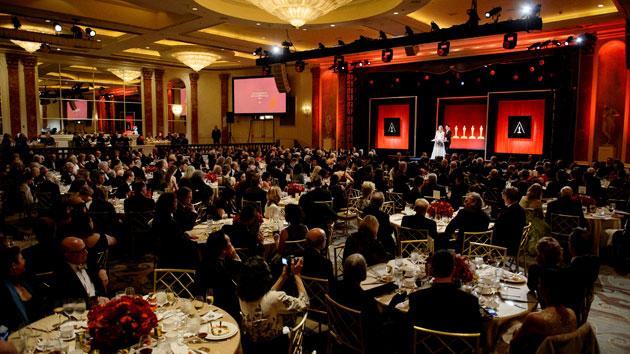
This year’s winners of the Academy of Motion Picture Arts and Sciences’ Scientific and Technical Awards were extremely impressive, and their impact on the industry is undeniable. As an imaging scientist, this is exciting stuff to me. I will freely admit that not everyone in the industry should be expected to know exactly what these innovations mean for filmmakers, moviegoers, and the business overall. So I’ve tried to identify and explain the three most important scientific and technological advances honored at this year’s awards show.
Photo, top of page: Michael Yada / ©A.M.P.A.S.
Digital Cameras
The fact that the creators of the Alexa, Sony F65, Red Epic, Viper and Genesis cameras were all given an award is significant because these cameras made filmmakers take notice of digital cameras and consider capturing feature films on digital instead of film. It’s important to realize that migrating away from capturing on film was not taken lightly. The level of image quality that film provided for decades set a bar that many were wary of moving away from in the beginning of the digital revolution. These cameras, each in their own way, have provided a level of quality that creatives can embrace. Each is unique, and while there are those that prefer one camera over another, collectively these cameras are responsible for the majority of imagery captured in the industry today.
Facial Recognition / Animation Software
Facial recognition and animation technology from ILM, Digital Domain, Sony Imageworks and Weta Digital is allowing digital characters to play major roles. There’s a concept called the “uncanny valley,” which is used to describe when something that’s supposed to look real looks too real to be considered cartoonish, but not realistic enough to be completely convincing. If a CG character lives in the uncanny valley, a lot of moviegoers find it creepy. It can feel like you’re looking at a doll or something without a soul. A prime example of a successful use of this technology breaking the uncanny-valley barrier is that ILM was just involved in a show where a main character was CG and most people in the audience weren’t even aware. Each company’s approach may be slightly different, but this pursuit of perfection shows how committed the VFX industry is to its art. The possible applications are endless.
Global Illumination
The global illumination aspect of the V-Ray rendering system from Chaos Group is fascinating because it allows us to really dig into how light behaves. The term “ambient occlusion” basically refers to how light interacts with an object. When light hits an object, it doesn’t just bounce off at an angle. Some of it does, but some light is absorbed into the object and the rest is absorbed, rattles around in the object and bounces out at a different angle. The result can live on a subconscious level with the viewer. If not handled properly, digital skin can look waxy or the CG character may not fit in the background plate that was shot on location in a natural way. The inclusion of global illumination in renderings of CG skin yields results that are just astounding.
These award winners are changing not only how movies look but how they are made. It may be called Oscar’s Scientific and Technical Awards but there is art within what the winners have created, each beautiful and unique. I cannot wait to see what next year has to offer.
Matthew Tomlinson is the senior vice president of imaging science at Shed.
Sections: Technology
Topics: oscars 2017
Did you enjoy this article? Sign up to receive the StudioDaily Fix eletter containing the latest stories, including news, videos, interviews, reviews and more.
